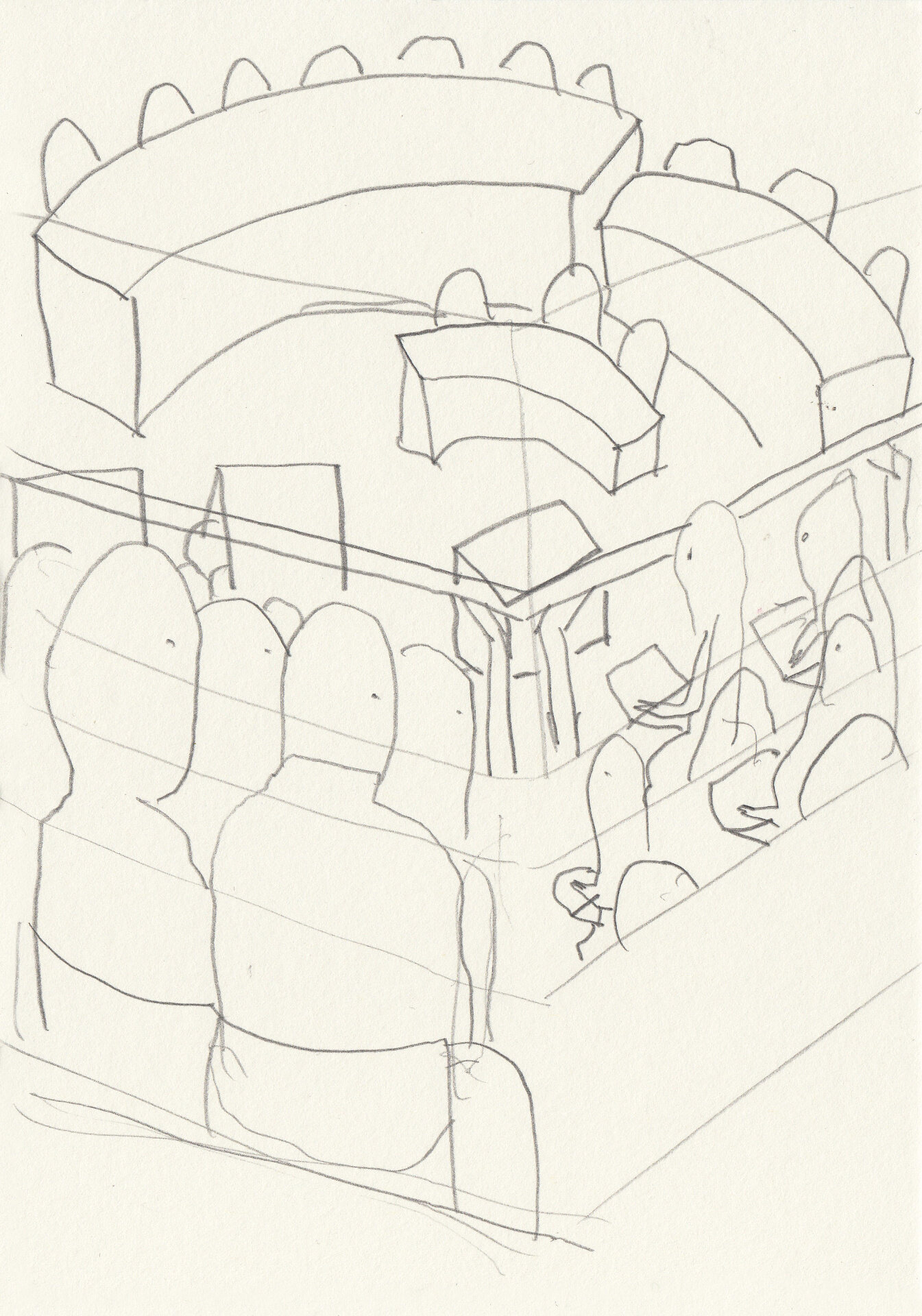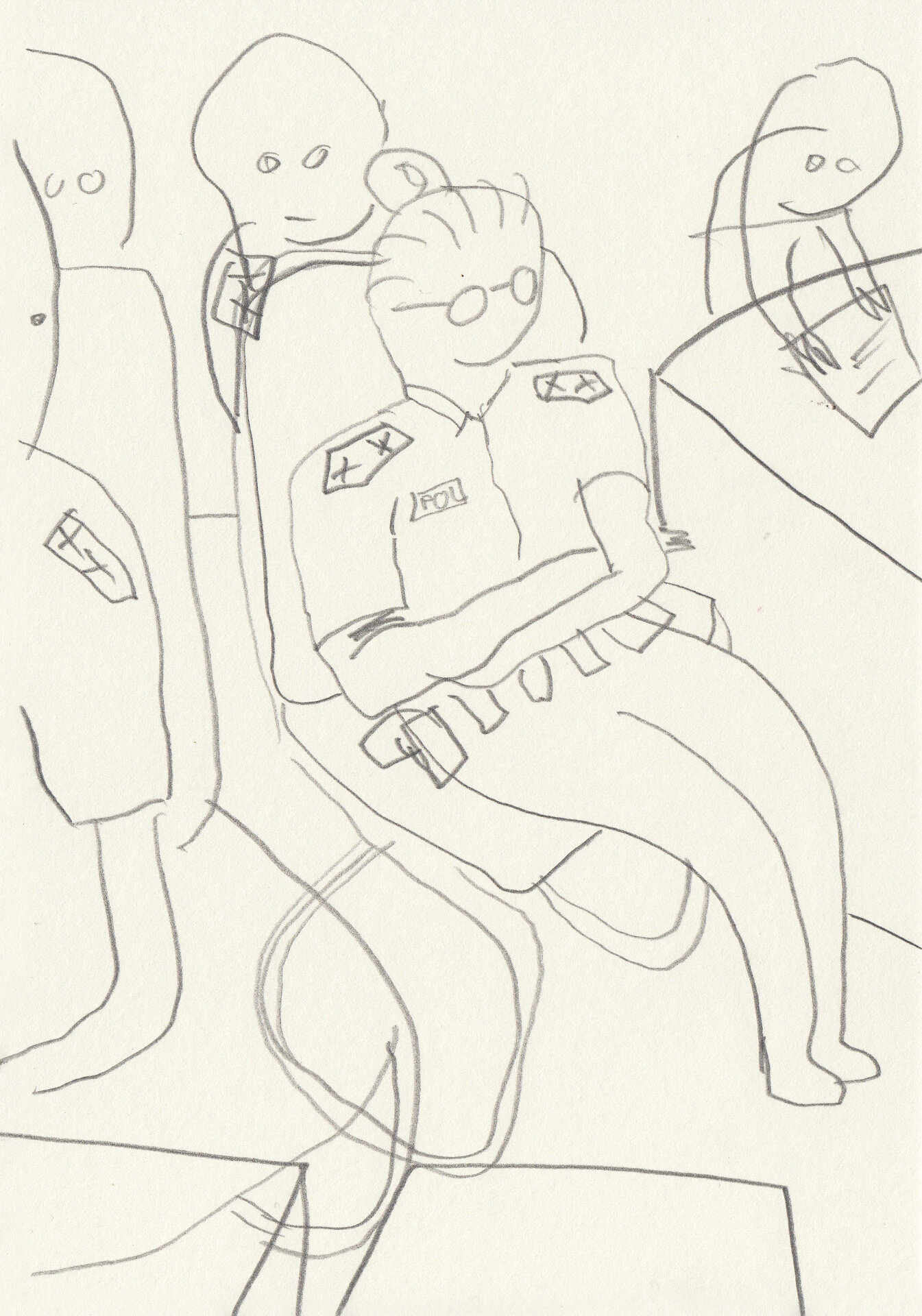The main proceedings against the five defendants charged with the crimes committed by the National Socialist Underground (NSU) were held before the Higher Regional Court of Munich from 2013 to 2017. This right-wing extremist terror group had committed a string of murders and other violent attacks in Germany for years. The judgment, which runs to more than 3,000 pages, was pronounced a few weeks ago, bringing the first stage of the trial to a close. And yet, there are still many unanswered questions about the NSU and its deeds.
Artist Sebastian Jung attended the NSU trial in court, making pencil sketches of the proceedings. His drawings reflect the observer’s view. The media fanfare that accompanied the start of the trial ebbed as the proceedings dragged on. At times, questions about the main defendants’ clothing and hairstyles seemed more vivid than the crimes themselves, or the ways in which the police and domestic intelligence service were entangled in the laborious investigations. Jung has crafted a relief measuring 2 by 4 meters for the façade of the building based on his drawings of the proceedings, made in the courtroom of the criminal justice center in Munich. The work explores the unanswered questions that remain after the trial, along with the fundamental way that the acts of the NSU are treated. The center of the relief is a large blank space, marking the place where witnesses typically testify. This omission is Jung’s way of placing the crimes beyond visual representation. By presenting the view from the public gallery inside the courtroom, he also questions the public view of the proceedings, in which some participants, such as joint plaintiffs, were not visible enough.
The work makes the outdoors a new venue, calling for an urgently needed ongoing public consideration of the events. It also urges viewers to rethink the as yet unknown long-term political and social ripple effects of the NSU complex. While the artist is especially interested in the structural issues behind the complex, the Munich Documentation Centre for the History of National Socialism has an additional aim in its intervention: to point out the lack of a central public place of remembrance of this crime spree, the largest series of murders committed by right-wing extremists in the history of postwar Germany.








